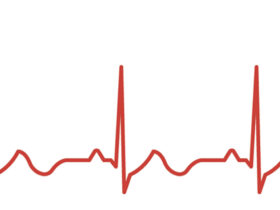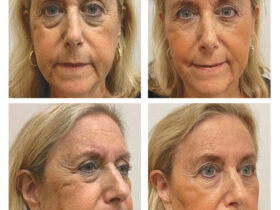By Sonny Grensing
Knee pain is a common concern that affects many, particularly as we age. For those who appreciate an active lifestyle, knee discomfort
can significantly hinder enjoyment of activities such as golfing, hiking, pickleball, or even a leisurely stroll. Understanding the underlying causes and exploring advanced solutions can make all the difference in reclaiming a pain-free, active life. This article compares regenerative therapy and functional medicine with traditional treatments like cortisone injections and medication, to help you make informed decisions about your knee health.
Common Knee Conditions
Before exploring solutions, it’s essential to recognize the most common types of knee injuries and conditions:
1. Osteoarthritis: Often called “wear and tear” arthritis, this condition involves cartilage degeneration, leading to “bone on bone” pain and stiffness.
2. Meniscus Tears: These occur when the knee is twisted while bearing weight, often resulting in pain, swelling, and limited movement.
3. Ligament Injuries: Including ACL (anterior cruciate ligament) and MCL (medial collateral ligament) tears, usually caused by sudden stops or changes in direction.
4. Patellar Tendinitis: Also known as “jumper’s knee,” this condition involves inflammation of the tendon connecting the kneecap to the shinbone, often causing pain when using stairs.
5. Bursitis: Inflammation of the small fluid-filled sacs (bursae) that cushion the knee joint, leading to pain and swelling, making it difficult to kneel or rise from the floor.
Traditional Treatments: Cortisone Injections and Medications
Cortisone injections and pain medications have long been go-to treatments for knee pain. While these methods can provide quick relief, the results are temporary and often mask symptoms rather than address root causes.
Cortisone Injections: These can rapidly reduce inflammation and pain. However, their effects are temporary, and repeated use can lead to weakening of joint structures, scar tissue buildup, and potential side effects such as increased blood sugar levels and higher risk of joint infection.
Medications: Nonsteroidal anti-inflammatory drugs (NSAIDs) and pain relievers can help manage pain and inflammation. However, long-term use can lead to gastrointestinal issues, cardiovascular risks, and potential dependency.
While these treatments offer symptom relief, they do not promote actual healing of knee structures. This is where regenerative therapy and functional medicine come into play.
Regenerative Therapy: Healing from Within Regenerative therapy focuses on harnessing the body’s natural healing capabilities to repair and regenerate damaged tissues. Common regenerative treatments for knee pain include:
Platelet-Rich Plasma (PRP) Therapy: This involves drawing a small amount of the patient’s blood, processing it to concentrate platelets, and injecting it into the knee. Platelets contain growth factors that can stimulate tissue repair and reduce inflammation. This approach is often most effective for newer injuries and in younger, healthy individuals.
Stem Cell Therapy: This treatment uses stem cells, often harvested from donated umbilical cord tissue. These cells have been shown through research and clinical studies to regenerate cartilage, tendons, and ligaments. Stem cells have the unique ability to develop into various types of cells, aiding in the repair of damaged tissues or creating joint space for more pain-free and fluid motion.
Regenerative therapy offers a more sustainable solution by addressing the root cause of knee pain, promoting natural healing, and potentially leading to long-term improvements in joint function.
Functional Medicine: A Holistic Approach
Functional medicine takes a comprehensive approach to knee pain, considering the interconnectedness of the body’s systems. This method involves:
Personalized Nutrition: Anti-inflammatory diets rich in omega-3 fatty acids, antioxidants, and essential nutrients can support joint health and reduce inflammation. Functional Medicine providers often include peptide therapy to speed healing and stem cell proliferation.
Exercise and Physical Therapy: Tailored exercise programs can strengthen muscles around the knee, improving stability and reducing strain on the joint.
Lifestyle Modifications: Stress management, adequate sleep, and maintaining healthy weight and blood sugar levels can all contribute to better knee health and overall well-being.
Regeneration vs. Symptom Management
The fundamental difference between regenerative therapy and traditional treatments lies in their approach to knee pain:
Traditional Treatments: Focus on symptom relief, often providing temporary respite without addressing underlying issues.
Regenerative Therapy and Functional Medicine: Aim to heal and repair the body, offering a more holistic and long-term solution by promoting natural healing processes and overall health.
Making the Choice
For those seeking not just relief but true healing, regenerative therapy and functional medicine present promising alternatives to conventional treatments. By focusing on the root cause of knee pain and supporting the body’s natural ability to heal, these methods can help maintain an active, fulfilling lifestyle well into your golden years.
Well Infused’s Approach
Well Infused is committed to delivering personalized results beyond a one-size-fits-all approach. Before starting a care plan, a comprehensive evaluation establishes a baseline to measure health improvements. Regenerative Therapy and Functional Medicine recommendations always include preparatory and follow-up services, aiming to help each client achieve exceptional results and optimal well-being through innovative services.
The Worlds First FUNCTIONAL FUSION™️ Lounge
Call us today for a Free Consultation!
239-331-7607
www.wellinfused.com









